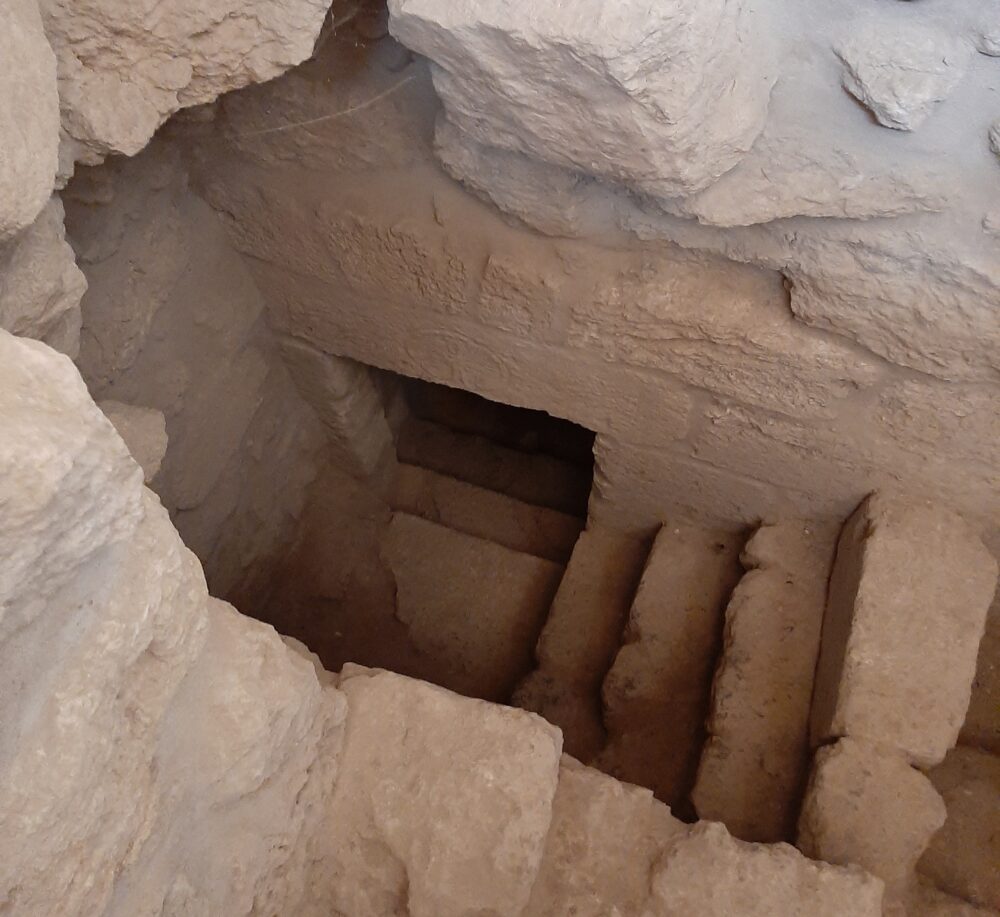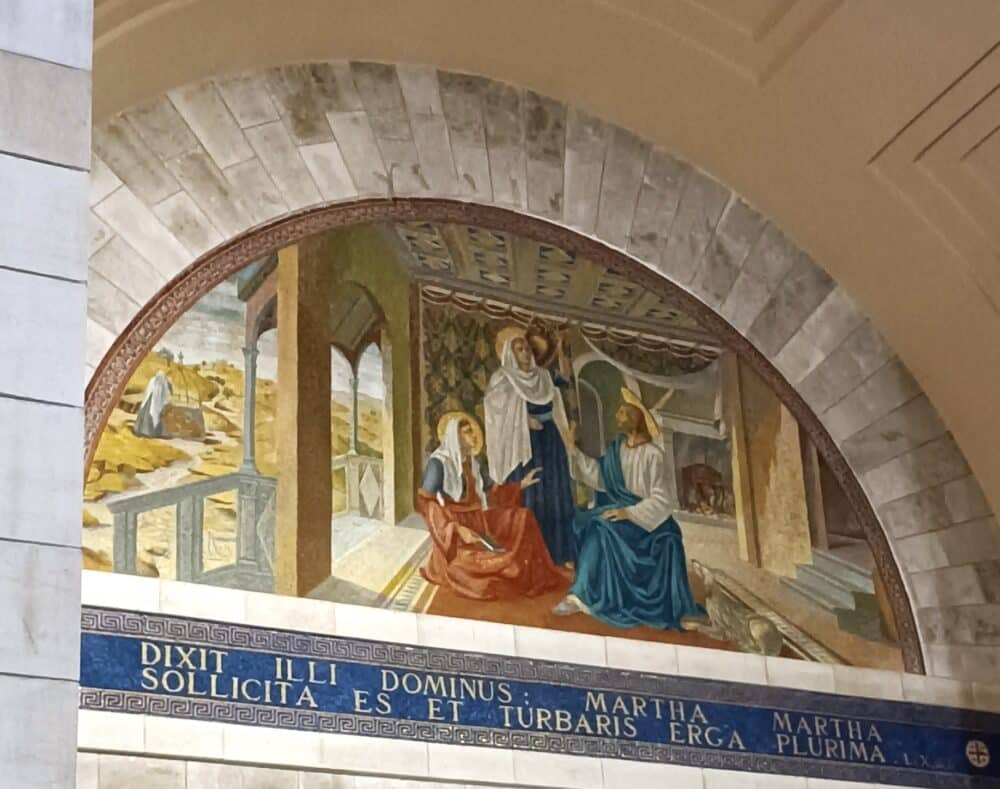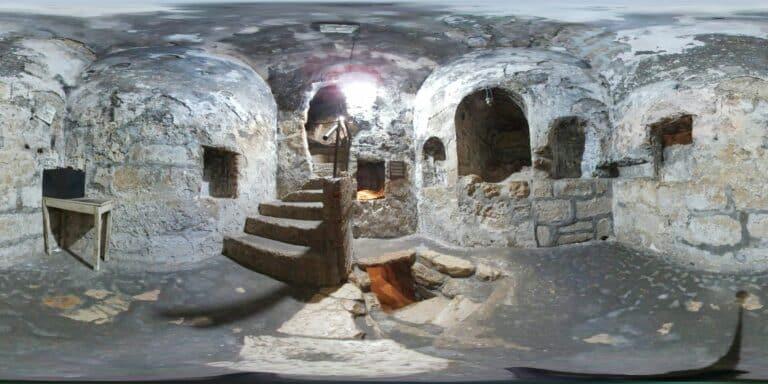On April 3rd, the miracle of the resurrection of Lazarus is remembered; but where is his famous tomb? Where is he commemorated?
Where is the Tomb of Lazarus?
We are in Palestine, in Bethany: a small Palestinian town on the eastern slopes of the Mount of Olives, halfway between Bethlehem, Jericho, and the Dead Sea. Its Arabic name is "Al-Azariya," which literally means "City of Lazarus." If you wonder how to get there from Jerusalem, the journey by car takes about half an hour.
This is rather strange, considering that the two cities are only 3 km apart. In theory, one could walk there in less than 40 minutes—so why does the route take so much longer?
The answer lies in the wall: the separation wall, erected in 2002, has placed an insurmountable barrier between Jerusalem and Bethany. The two cities stand across from each other, within sight, but the view is blocked by the wall, which must be circumvented to reach the nearest crossing point. This has left Bethany isolated: incredibly close to Jerusalem, yet more than a thirty-minute drive away along unpaved roads.
This has greatly complicated access to the site and, consequently, tourism—one of the main sources of income for the inhabitants of Bethany. The Tomb of Lazarus and the surrounding buildings have always been among the most visited sites in Palestine, particularly before the wall and before the latest tragic phase of the Israeli-Palestinian conflict.
The Tomb of Lazarus
The miracle of Lazarus’ resurrection is one of the most well-known episodes in the Gospels, attracting countless tourists and pilgrims. The tomb where Lazarus rose and walked can still be visited today. Carved into the rocky mass, it has been the focal point of a long tradition of worship and archaeological research. Originally designed with a vestibule and a burial chamber, it became an important pilgrimage site as early as the 4th century, as evidenced by ancient writings and travelers’ accounts.
Over the centuries, the site has undergone numerous transformations: from the first church, built at the end of the 4th century and decorated with mosaics, to subsequent reconstructions following seismic destruction and Crusader-era restorations. In the 12th century, for instance, the Crusaders restored the complex, and in 1138 Queen Melisende acquired the site, initiating a new construction phase that led to the establishment of additional churches.
The Resurrection: A Hope Carved in Stone
With the Ottoman conquest, the church was converted into a mosque, and the entrance to Lazarus’ tomb was sealed in the 16th century. However, the Franciscans were permitted to open another entrance—the one still in use today: a steep 24-step staircase carved into the rock, leading directly to the tomb.
Before the passage that leads to the tomb, there is an inscription:
"When the perishable has been clothed with the imperishable, and the mortal with immortality, then the saying that is written will come true: ‘Death has been swallowed up in victory.’ Where, O death, is your victory?" (1 Corinthians 15:54-55)
The defeat of death through rebirth, the tangible possibility of new life—the Tomb of Lazarus in Palestine stands as a material symbol, a hope carved in stone, reachable in twenty-four steps on as many ancient stairs.

Archaeological Excavations at the Tomb of Lazarus
Recent restoration and study activities, conducted during a period of reduced tourist flow, have brought to light significant archaeological findings, including two Roman ossuaries discovered in the burial chamber. These discoveries contribute to a better understanding of the site’s millennia-old history, highlighting its value from both historical and religious perspectives. In this sense, the absence of tourists has been beneficial, allowing work that would have been unthinkable under normal conditions.
Thanks to this artistic and archaeological focus, the tomb has undergone numerous interventions over time, enhancing its historical and cultural significance. Today, the Tomb of Lazarus tells us stories of centuries layered one upon another, of peoples and cultures interwoven, of wars and rebirths, of conquests and hope. Restoration efforts have also made several areas of Bethany accessible again, bringing significant benefits to the local community.
The Sanctuary of Friendship
The story of Lazarus is commemorated in the nearby church, built on the remains of three previous churches. The first, dating back to the 4th century, still has visible mosaic remnants. This church was destroyed two centuries later, probably by an earthquake, and a new church was built on its ruins. This structure endured until the arrival of the Crusaders, after which Queen Melisende reconstructed the site, acquiring the Tomb of Lazarus and the surrounding area.
A new church was then erected beside the ancient one. This newer church was dedicated to Saint Lazarus, while the earlier church was rededicated to the memory of his two sisters, Martha and Mary—representing a feminine remembrance in a village deeply connected to the values of friendship and hospitality.
In 1954, on the site of the original three churches—specifically on the remains of the 4th-century basilica—the present-day Church of Saint Lazarus was built by architect Antonio Barluzzi. Known as the "Sanctuary of Friendship," it was so named for its deep evangelical significance. The interior is decorated with mosaics depicting episodes of Jesus in Bethany: Jesus in the home of the three siblings, the resurrection of Lazarus, and Martha’s act of gratitude and devotion—anointing Jesus’ feet with the rare and precious nard oil after the miracle.













